If you’ve just noticed that FeatureWorks has disappeared and you can no longer edit .STEP and Parasolid files the way you used to, you might want to disable 3D Interconnect. Before you do that, its worth covering a little bit of SOLIDWORKS history.
With the release of SOLIDWORKS 2017, we saw the introduction of a technology called 3D Interconnect. This allowed us to open PTC Creo, Solid Edge, NX or Autodesk Inventor files natively, with no conversion required (you can open CATIA files too, but only with SOLIDWORKS Premium). So, if you used the file inside an assembly – and then altered the file – it could be automatically updated to the new version, without the need to re-import. Take a look at the video below to see how it works.
Video: 3D Interconnect in action
Whilst still in Beta in 2017, you could use it by turning it on through the system options…
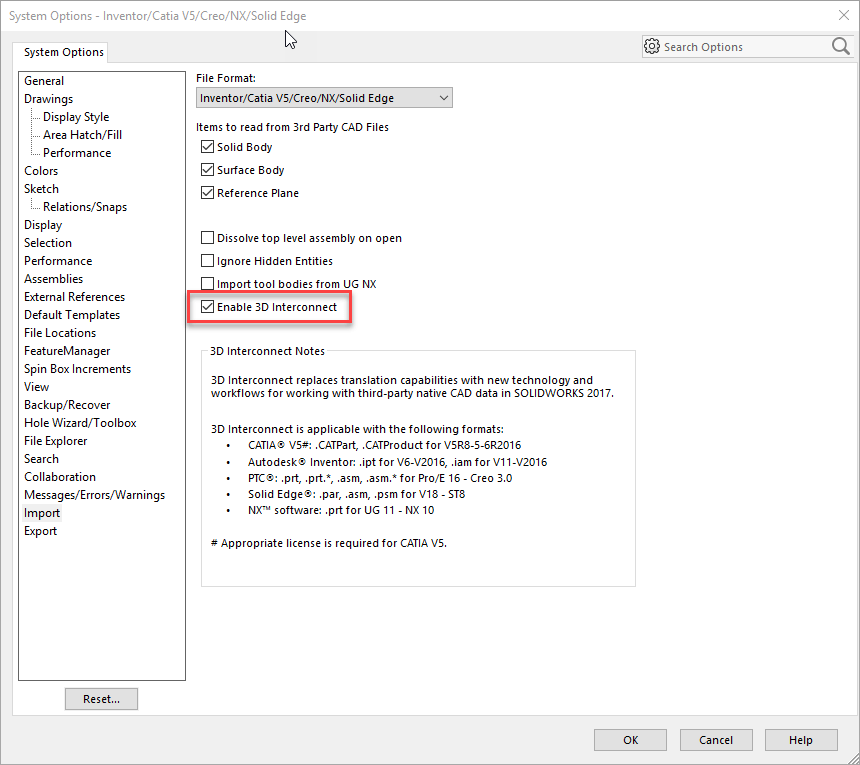
…which is a little difficult to find, so you may not have stumbled across it.
In SOLIDWORKS 2018 the functionality has been extended to .STEP, Parasolid and .ACIS files so they too can be opened in their native format. However, instead of 3D Interconnect being turned OFF by default, it is now turned ON.
FeatureWorks vs 3D Interconnect
Let’s look at the differences between FeatureWorks and 3D Interconnect, so you can make an informed choice as to whether you want use 3D Interconnect or not.
In the image below, we have the feature tree for an imported .STEP file in SOLIDWORKS 2018 with 3D Interconnect turned off. You can see that we’ve imported an assembly, but if you look under each part you can see an Imported body feature.
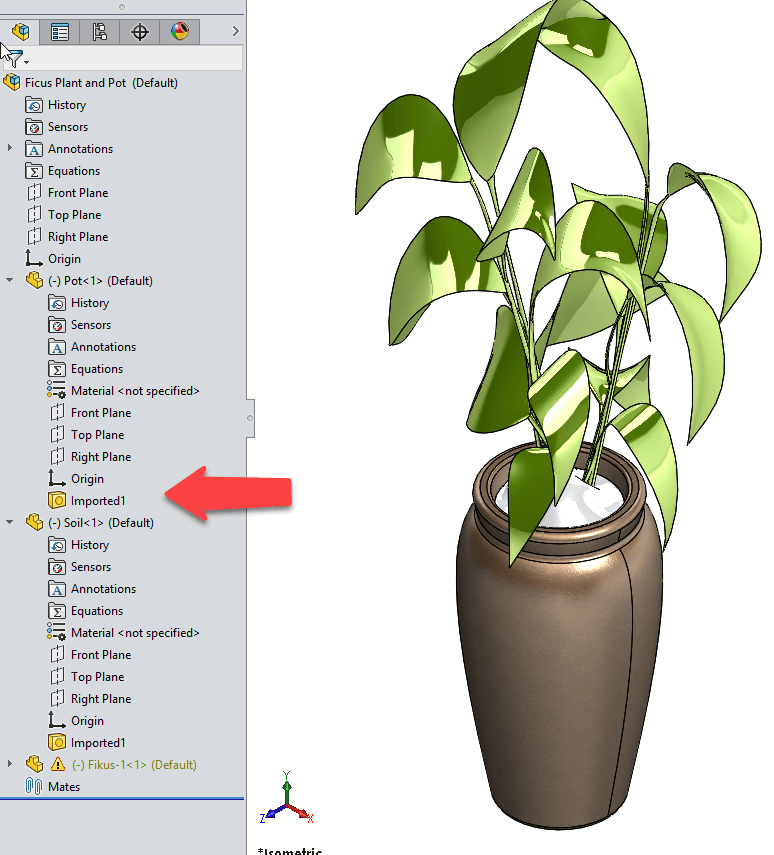
This is the functionality you’re probably used to. If you want to recognise features, or add features to the imported body, you can right click and use FeatureWorks to intelligently extract them, or just create each feature within the part file.
If you save the imported assembly now, you will create 3 part files and one assembly file on your system.
Let’s compare that feature tree with the same assembly but using 3D Interconnect:
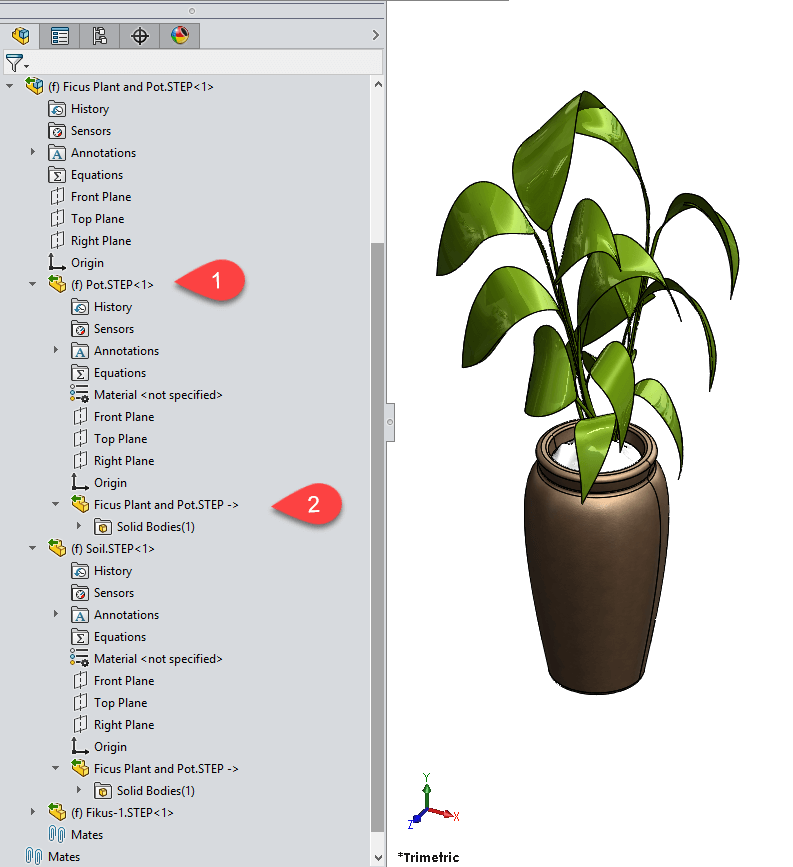
If you look at arrow 1 (above), you can see that the name of the file is suffixed with the file extension (In our case “.STEP”) – this is because 3D Interconnect is reading the file directly and not converting into SOLIDWORKS part file.
Now look at arrow 2. You can see an external reference symbol (->) after the filename. Again, this is an indicator that the file is referencing something externally. You can also see a “Solid Bodies” folder under the part file.
If you were to save the assembly file at this point, you’d create a single assembly file on disk. In that assembly, there will be a pointer back to the .STEP file on disk, so if the .STEP file is replaced with another variant of the same name, the file will update to reflect the changes. This is one of the main benefits of 3D Interconnect.
If you want to make changes to the .STEP file, you still can, even if you’ve used 3D Interconnect, but there are some extra steps involved.
Look at the image below. You need to right click on the assembly file in the tree and select “Dissolve Feature”.
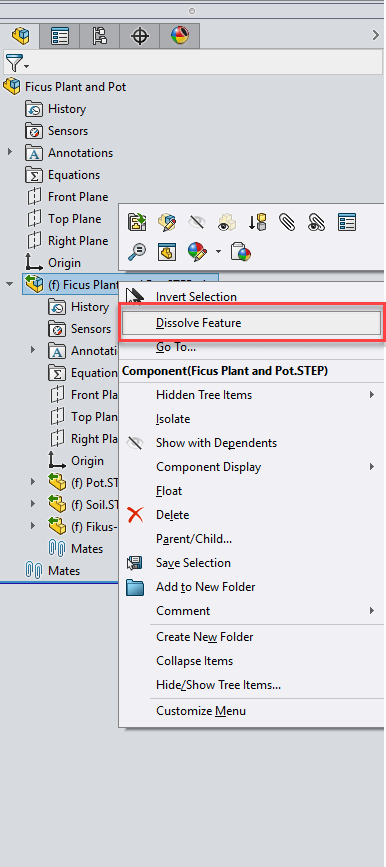
This will give a warning about breaking the link to the original .STEP file. So, the functionality that 3D Interconnect gives us (to automatically update from the .STEP file if it changes) will be removed.
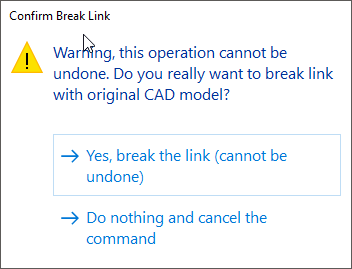
This completely severs the link between the .STEP file on disk and creates a feature tree the same as opening a .STEP file without using 3D Interconnect.
So if you’ve found that you can’t edit .STEP or Parasolid files in the way you used to, the chances are 3D Interconnect is turned on. But, now you know what it does, and what the advantages are, you can make an informed choice as to whether you use it or not.
We hope you found that useful!
Have you seen our blog archive where we have posted plenty of helpful articles? We also have a fantastic video library filled with easy-to-follow videos on a number of topics inspired by other SOLIDWORKS users – take a look. Also, don’t forget to follow Innova Systems on Twitter for daily bite size SOLIDWORKS tips, tricks and videos.


















